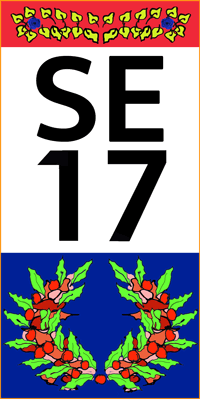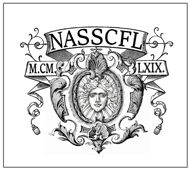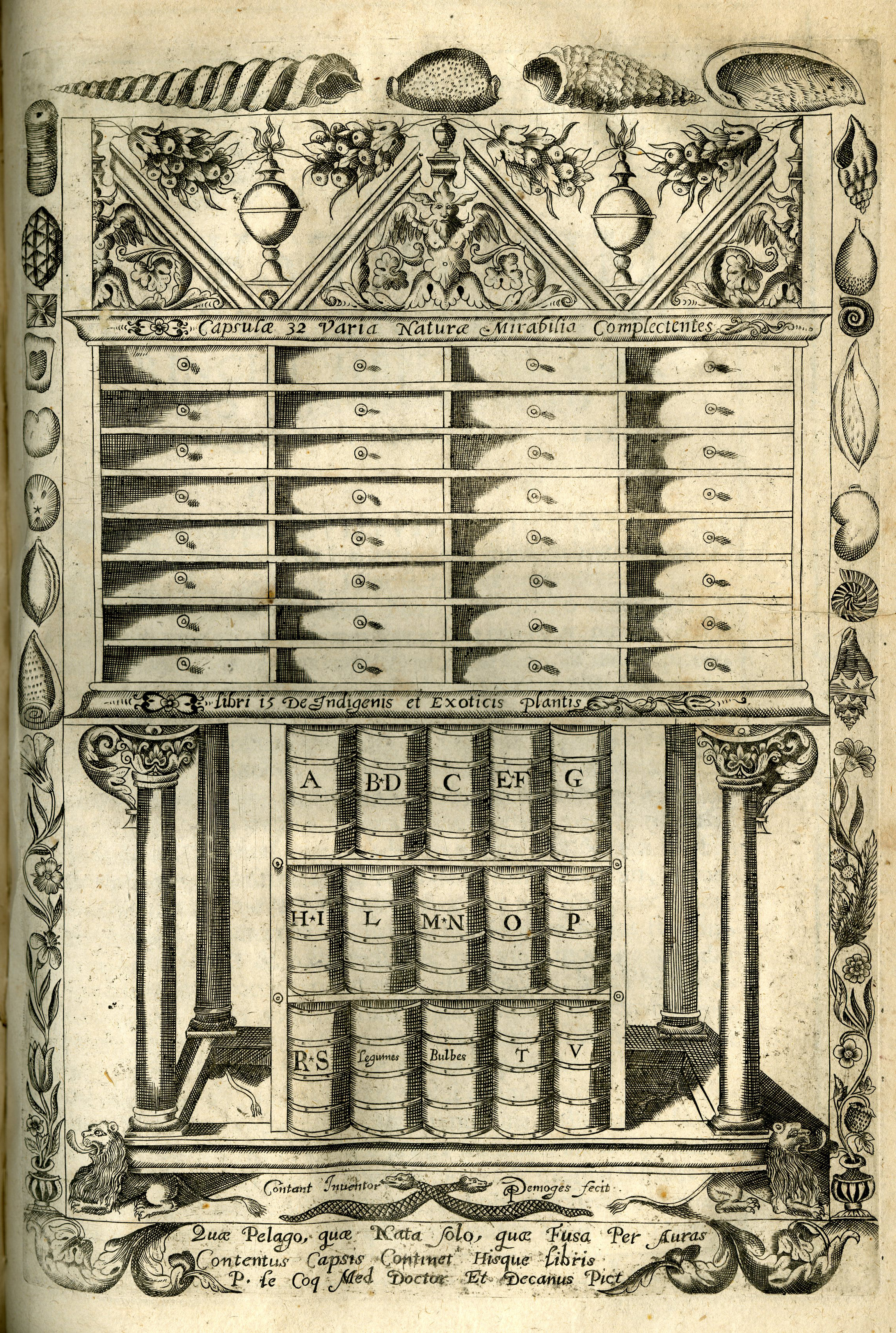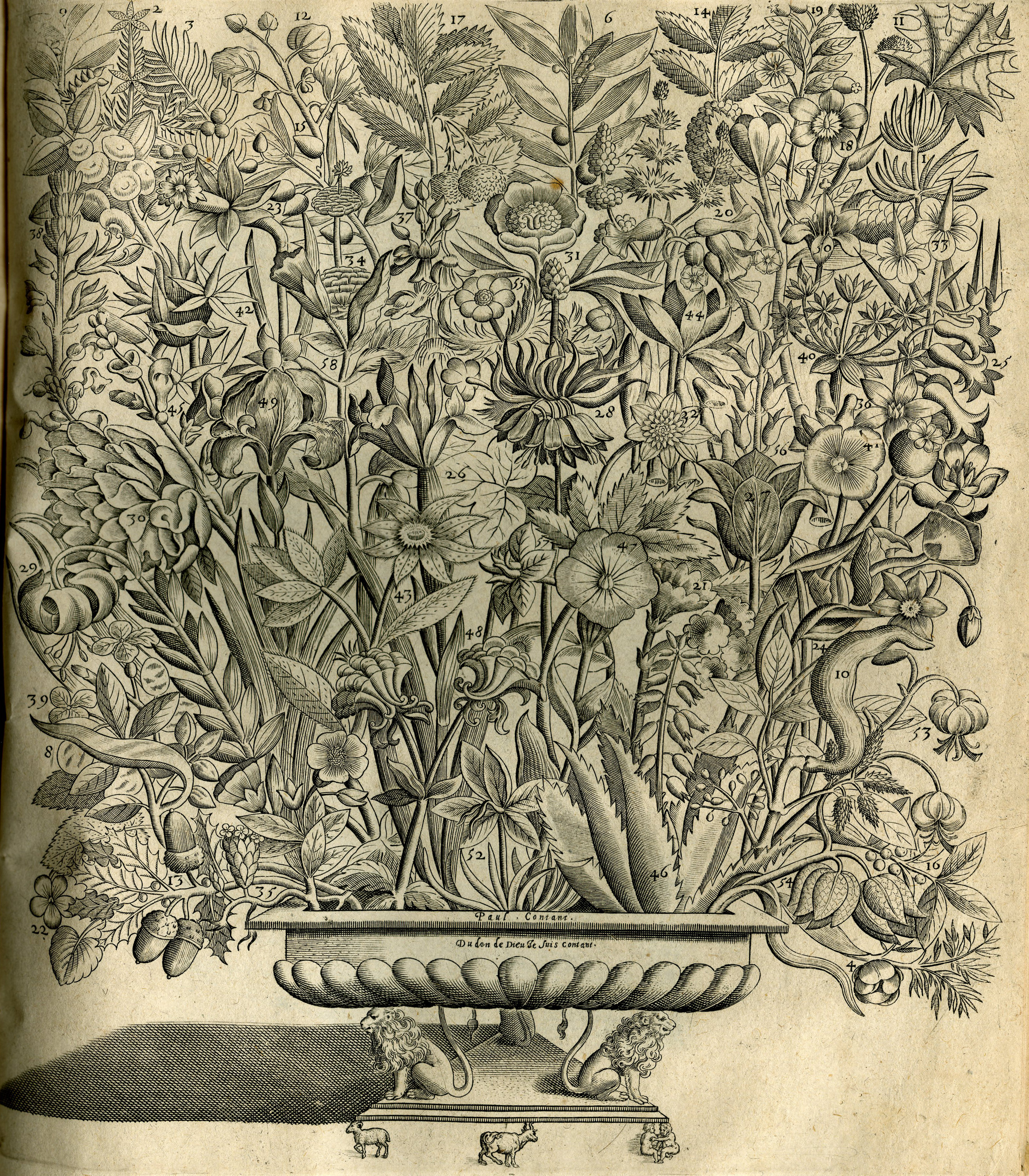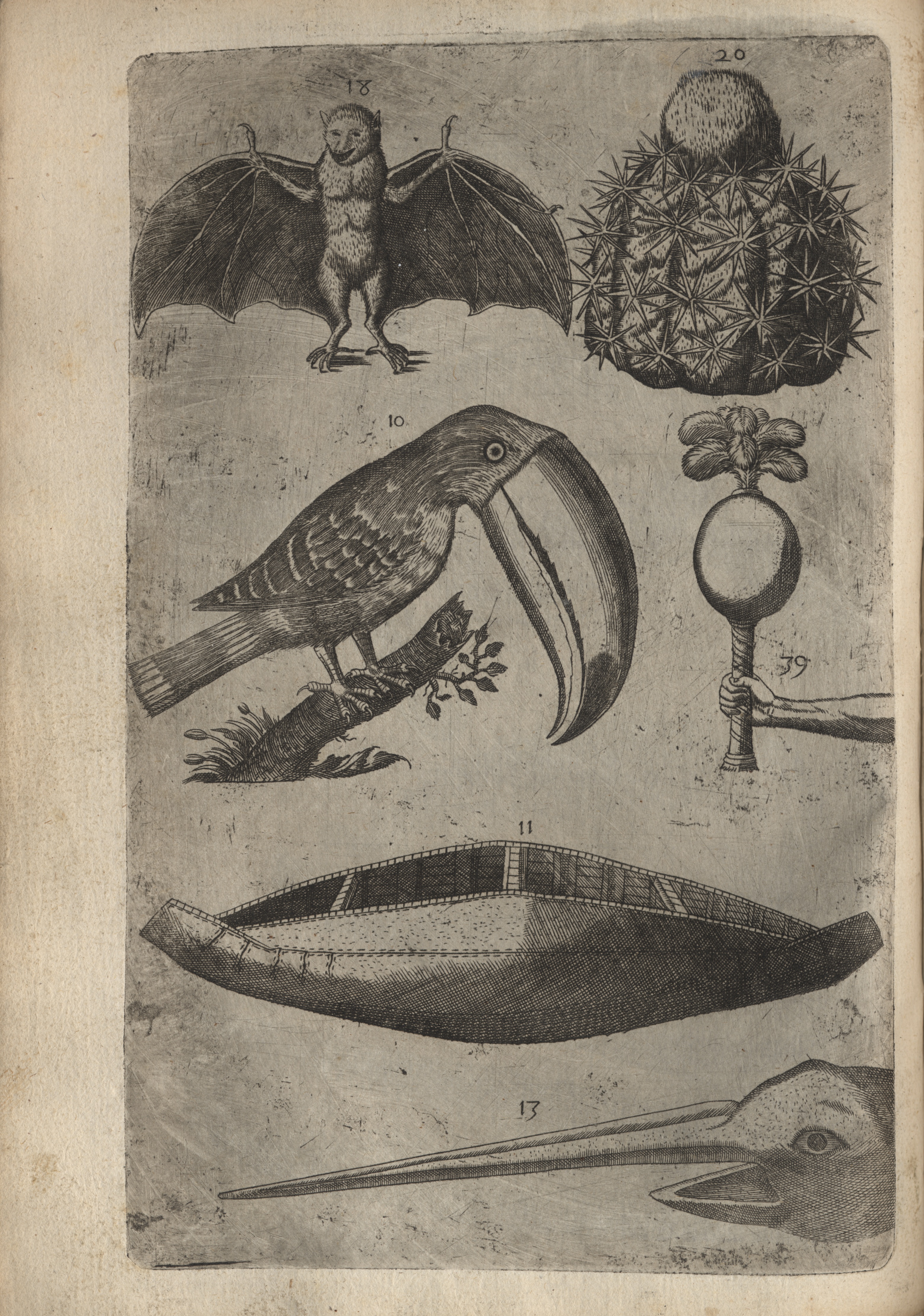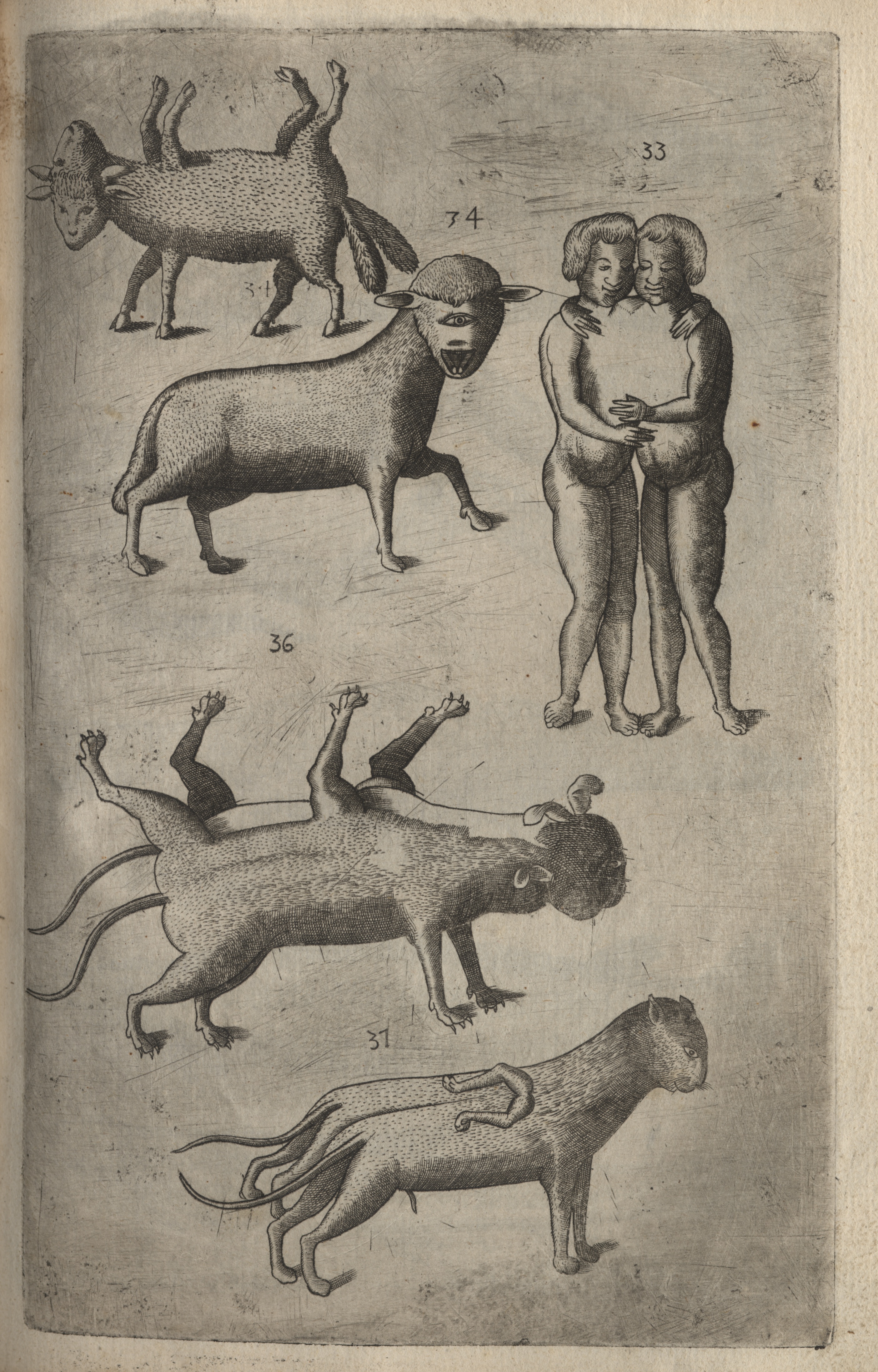Printable PDF of Gethner, 156_169
Among the most memorable moments in the plays of Jean Rotrou are the scenes where a character who had earlier died or was believed to be dead unexpectedly returns. In addition to the obvious surprise value of such episodes, the playwright, by imagining what it would feel like to return from the dead, used them to convey a moral and/or spiritual message. The resurrected characters display a greater level of maturity than before and now behave in an exemplary way. In addition, their enhanced moral worth receives the recognition it deserves from the other characters, thus reflecting a shared glorification of the good qualities that the protagonist has already been shown to possess. Moreover, they tend to emerge from the experience with a heightened devotion to religious faith and values.
In Rotrou’s tragicomedies, which furnish nearly all the examples of false death announcements, the resurrection is not literal, because the report of the character’s death turns out to have been inaccurate, due to either error or stratagem on the part of the announcer. Although these announcements were a stock convention in baroque tragicomedy, Rotrou used them more often than anyone else, and in a greater variety of ways.[1] However, most of the critical attention given to this convention has concerned either its importance as a plot device (who spreads the false death report, why, and whether or not the announcer believes the news is true; whether the report impacts the dénouement) or its symbolism (most notably, the standard baroque uncertainty about what is real/true/permanent). There has been no general study of how the experience of surviving a false death affects the characters who return to life. I am leaving aside those characters who report their own death or allow a friend to do so on their behalf, and also those who do not learn until later that someone else has reported them as dead; since they know full well that they have not died or lain in a deathlike state, they obviously do not undergo a transformation.[2] Instead, I propose to examine only those characters who emerge from a prolonged fainting spell or coma and have the conviction that they really were dead and have now been resurrected: these occur in tragicomedies (L'Hypocondriaque, La Pèlerine amoureuse, Célie, Dom Lope de Cardone). I also examine one tragedy where a character really dies and is then resurrected (Hercule mourant). In all these cases the characters undergo a transformation, believing that they must henceforth behave in a manner justifying the miracle of their return to life. Significantly, the reawakening is usually not shown on stage (L'Hypocondriaque is the exception), which requires the spectator to evaluate the contrast between their before and after states. Rotrou’s fascination with the resurrection experience can be confirmed by the fact that two of the plays studied here have no direct literary source (L'Hypocondriaque and Dom Lope de Cardone), while in a third case his treatment of the crucial scene differs radically from the source play (La Pèlerine amoureuse).
Since normally the apparent death and resurrection both occur during the course of the play, the contrast between before and after is immediately apparent. The exception is La Pèlerine amoureuse (c. 1632; published 1637), where the heroine’s coma and reawakening take place several months prior to the start of the play’s action. In this case the alteration in her character and thinking must be inferred from the narrative of her past adventures that she delivers to her confidant midway through the play. Angélique explains that she succumbed to despair when her beloved Lucidor did not return by the arranged date and she concluded that he had forgotten her. Her mental anguish led to physical illness and eventually to a prolonged fainting spell, and she remained unconscious for so long that she was believed dead. When she recovered, she resolved to travel to Lucidor’s home town of Florence to find and confront him, but in order to get her family’s permission to make the journey, she claimed that during her convalescence she had made a vow to go on a pilgrimage in order to give thanks for her recovery. Although Angélique does not realize it, her new role as a representative of religion has effected a genuine transformation in her: she is more self-confident, more willing to assist others, and more concerned about her relationship to God, as shown in her feelings of guilt about using a sacred disguise for a profane purpose. Starting with her opening appearance, she does her best to live up to the standard of saintliness people expect from pilgrims. When she is consulted by people along the way about their illnesses or other problems, she proves a sympathetic listener who gives good advice whenever possible and offers her prayers on behalf of those suffering. The play gives the impression that it is in large part because of her sincere religious belief and her benevolence that she receives the reward she has hoped for.
The link between resurrection and religiosity is reinforced by the fact that, when the lovers are finally brought together, Angélique plays two of the standard roles associated with God: sitting in judgment and granting pardon. Since she believes that her success in locating her beloved is part of a divine plan, she feels authorized to make the claim that she has been granted the gift of omniscience in order to serve others:
Le Ciel m’a départi cet heureux privilège
Que je connais les maux, qu’il consent que j’allège,
Il m’inspire à quels gens, je dois vouer mes soins,
Et souvent c’est à ceux que je connais le moins (V.8.1701–04).
She then diagnoses Lucidor’s ailment: infidelity in love, which she labels as “le pire / De ces vices honteux sous qui l’honneur respire” (v. 1709–10), and she prescribes as the cure that he must renounce his new beloved and return to his original one. Misinterpreting his amazement at finding her alive, she launches into a lengthy denunciation of his abandonment and infidelity, though she assures him that her love for him has not diminished despite his misconduct. To demonstrate her sincerity, she declares herself willing to do anything he requests, apart from violate her honor. She even offers up her life in martyrdom: “Passe au dernier effort, teins ces lieux de mon sang,/ Je baiserai la main qui m’ouvrira le flanc” (v. 1763–64). This gratuitous offer may be more than baroque hyperbole, since the willingness of an innocent person to perform self-sacrifice in order to redeem a sinner has unmistakably Christian overtones. Lucidor, ecstatic to be reunited with her, explains how the misunderstanding came about, and all is quickly forgiven. Thanks to the false death convention, Angélique is allowed to give vent to her frustration and anger at the man who has betrayed her, before quickly forgiving him and agreeing to marry him. But that convention also allows her to exhibit the saintly side of her personality, showing that she does really live up to her name. Indeed, her last line during the reconciliation scene (“Et je passe en bonheur les plus rares esprits” [v. 1796]) could be read as meaning, “I am happier than even the angels.” The dénouement thus allows for both forms of dramatic recognition: declaration of true identity (Lucidor at once recognizes the woman he loves, despite her disguise), and acknowledgment of character and/or innocence (Angélique’s exceptionally virtuous nature, which has been refined and manifested through her resurrection experience, is seen and praised by all the other characters). It should be noted that in Rotrou’s source play, Girolamo Bargagli’s La Pellegrina, the recognition element is downplayed to a startling degree: in the final scene the hero speaks to the heroine at great length without realizing who she is and recognizes her only when she shows him a bracelet and then removes her robe and hood. Moreover, the two remain alone on stage until the conclusion, and none of the other characters comes out to laud the pilgrim for her nobility of character. And Rotrou certainly had no intention of making his heroine declare in her final speech, as does Drusilla in the Italian play, that she is eager to cast off her pilgrim attire now that her pilgrimage is over. Angélique maintains a sense of connection with the spiritual realm throughout the finale.
In Célie, ou le Vice-roi de Naples (1644; published 1646), the false death report is far more plausible and occurs during the course of the play: the victim is left for dead after being stabbed by her father (reacting to a false report that she has been unchaste), and her return comes as a surprise to the audience, as well as to the other characters. Célie’s reaction to the shocking series of events, again combining indignation with forgiveness, likewise comes as a surprise since we do not know her very well: she has made only two rather brief appearances in the play prior to this point. However, we are able to form a reasonably clear impression of her pre-resurrection personality: Célie is a typical virtuous heroine, but she is also shrewd and resourceful, and she is not intimidated by men, whether suitors or authority figures. When we first see her, she has her first-ever interview with the male protagonist Alvare, to which she has agreed only after he has sent assurances that his intentions are lawful. During the interview he is extravagant in his protestations of love, whereas she remains level-headed, noting that his uncle, the viceroy, is unlikely to allow his marriage to a woman of small fortune. She hesitates to take the ring he offers, out of concern that this would violate the rules of decorum, and admits her own love for him only in very measured terms. She finally accepts his ring, kisses it, and then returns it to him as a pledge of her devotion. Later, when her maid Lucinde brings her the report that Alvare is really in love with another woman and is planning to marry her that very night (in fact, a deception he has organized in order to mislead his rival), she bitterly complains both of the personal betrayal and of the corruption of young men in general, who care only about women with money. When she realizes that her comments have been overheard by her sister, Ismène, she and Lucinde, unwilling to let Ismène in on their secret, have the presence of mind to claim that Célie was merely rehearsing her role in a forthcoming play.
When Célie reappears in the final scene, she has acquired an additional set of personality traits: anger at her persecutors and a demand to have her integrity and virtue publicly recognized. She greets Alvare with the indignation and scorn that he deserves, reproaching him for not having believed in her innocence and for having accused her, when he should have defended her. The denunciation is mixed with an emphatic declaration of self-worth: she declares Alvare to be her “mortel adversaire” (v. 1657), both because he incited her father to stab her and because he attacked her personal sense of honor:
Je suis noble, Seigneur, et sensible à l’outrage,
Autant qu’il est crédule, autant qu’il est volage,
Et sans être sans cœur et sans ressentiment,
Ne puis souffrir un traître en qualité d’amant ;
Le sein qu’il veut fléchir, saigne encor de son crime. (V.3.1661–65)
When Alvare proposes to make reparation to her honor by killing himself, Célie cleverly deflects this act of despair by declaring that he is too impure to serve as a sacrifice. She then forgives him and, claiming that her anger was merely feigned in order to satisfy the demands of her honor, agrees to accept him, not as a lover, but as a husband. She even forgives the treacherous Flaminie, since he is soon to become her brother-in-law, and she joins her approval to Flaminie’s match with her sister, already endorsed by both her father and the viceroy. Although Célie never invokes divine providence (that will be done by the viceroy in his two final speeches), she clearly subscribes to the principle that her near-death experience has brought her closer to God, whose behavior she must strive to emulate. Thus, Célie, like Angélique in the earlier play, marks her return to life by playing several roles normally held by God (and unusual for a young woman): judge and agent of forgiveness. But she also assumes a third role with a religious association, namely, sacrificial victim: she points out that her own blood has been shed on account of a sinful man, whom she must now redeem. Again, as in the case of Angélique, the heroine is allowed to assume these religious roles only for a short time, after which she is reintegrated into the standard social order. In the process, of course, she is granted an earthly reward, in that she gets to marry the man she loves, who also happens to be wealthy and well connected.
In Rotrou’s very first play, L’Hypocondriaque, ou le Mort amoureux (1628; published 1631), the character who undergoes a resurrection is not the person who is falsely reported to be dead, but rather the recipient of the report, who comes to believe that he is dead; hence, the play’s paradoxical subtitle. This startling turn of events is brought about thanks to the machinations of a woman whose affection the hero spurns: Cloridan, falsely informed that his beloved Perside is dead, becomes distraught and soon comes to believe that he too is in the underworld. However, whereas Perside, the character announced as dead, does not learn of this until Act V and can hardly be said to undergo any change as a result (although, to be sure, she is extremely gracious in forgiving those who have wronged her), Cloridan undergoes a full-fledged maturation experience. He begins the play as a faithful lover and heroic young man, though overly impetuous and prone to angry outbursts. When he is told that Perside is dead, his grief soon exceeds the bounds of propriety: he denounces the gods for their impotence in failing to prevent the premature death of his beloved, and then declares that he will punish them by destroying their temples and massacring their worshippers (III.2.705–16). These blasphemous utterances, unworthy of a virtuous hero, lead to equally irrational denunciations of the sun, which he threatens with the loss of its light and power, and to the wish that night, rather than day, should rule the world. His mad scenes, which fill up much of the second half of the play, not only allow Rotrou to explore attitudes toward death and dying, but also let us witness the protagonist’s gradual transformation into a model of humility and self-understanding. As madness overcomes him, Cloridan becomes reconciled with the gods and with the inevitability of death. He now praises the gods for taking pity on him and letting him rejoin Perside in a realm of purity. To be sure, he is still delusional, imagining that the real people around him are fellow inhabitants of the underworld; thus, he mistakes Cléonice for Perside, and Cléonice’s father for a rival. Rotrou adds a further layer of irony to the presentation of madness by having Cloridan imagine that everyone who speaks to him is mad, whereas he alone is sane. By the start of Act V Cloridan, who has been moved from a bedroom into a tomb, has attained a state of poetic serenity. He discourses on the ephemeral nature of earthly life and on the superior wisdom available to the disembodied spirits residing in the next world. His conversations become somewhat more rational and he stops mislabeling the people he sees; indeed, when Perside arrives he recognizes her at once. However, the revelation that the report of Perside’s death was a deception fails to bring Cloridan back to his right mind; his reaction is that all the other people he sees are really dead, like himself. After he is finally cured of his madness, he becomes gentle and humble, thanking everyone for restoring his sanity and totally overlooking the initial deception that was played on him. In fact, he recognizes that only artifice was capable of effecting the necessary cure:
Ma raison voit enfin la fourbe découverte :
On me rend la santé sous le front de ma perte :
Refuser du secours c’était me secourir,
Et vous me guérissez par la peur de mourir.
Je ne peux reconnaître un si pieux office,
Qu’offrant un cœur tout nu, pour ce doux artifice (V.6.2089–94).
The offer of his heart (a synecdoche for his whole person) parallels the willingness to undergo martyrdom in the plays discussed earlier, thus again linking resurrection to self-sacrifice. Cloridan, now able to recognize piety in others and to realize that God is judging him, concludes his declaration of humility by stating that all he will remember of this episode will be the shame of having briefly lost his reason. The overpowering experience of afterlife, even though it happened only in a deluded state, has produced what we are to suppose is a permanent transformation of his personality and thinking. In this play, the final recognition is primarily internal: Cloridan comes to understand that he is still alive, that his friends and his beloved genuinely care about him, that he has made an unworthy spectacle of himself, and that now he has a responsibility to live in accordance with the higher level of self-knowledge and wisdom that he has attained.
An even more unusual resurrection experience occurs in Rotrou’s final play, Dom Lope de Cardone (1649; published posthumously in 1652). This episode differs in many crucial ways from the norm for false death announcements in Rotrou’s tragicomedies: the character believed to be dead is the antagonist, not the male or female protagonist; the victim is guilty of the crime of which he is accused, rather than innocent; there is uncertainty at the end as to whether or not he will recover; and the audience does not get to see him after he has regained consciousness. Since the wounds are inflicted in a duel with an invincible warrior (the title character), Dom Sanche believes that he is dying, and this casts a shadow over the play’s otherwise happy ending. (In Célie the final act makes it clear that the heroine’s wound was not fatal; her father was too elderly and distraught to inflict serious damage.) Nonetheless, the transformation of the reawakened character is even more profound than what we find in the plays previously discussed, in that an excessively unruly and self-centered young man begins to act responsibly and altruistically.
Sanche is one of the more extreme examples of the fiery and impetuous young Spanish aristocrat. Brave to the point of foolhardiness, he constantly places himself in unnecessarily perilous situations. Unduly quick to take offense and to draw his sword, he attacks a stranger in the dark under the window of his beloved Théodore. When he discovers that the man he fought with was his best friend Lope, who must therefore be his rival in love, he demands to fight a formal duel over Théodore. Although Lope tries to calm him down by assuring him of his abiding friendship, Sanche insists. Later, when Théodore, who has been granted permission to choose between her suitors, does not announce her decision instantly, it is again the impatient Sanche who demands the resumption of their duel, even though the king has ordered the two young generals not to fight over her again. His arguments border on the subversive, as he questions whether kings necessarily expect their decrees to be obeyed and wonders whether the present king would dare to execute the generals on whom the security of his realm now depends. Since such a challenge to absolutist ideology cannot be allowed to triumph in the work of a politically conservative author like Rotrou, the audience expects him to be ultimately defeated.
However, once Sanche has apparently been mortally wounded, he attains the rationality and generosity that he has hitherto lacked. To be sure, he remains offstage, and we only hear his words paraphrased by his father, but it is clear that he takes full responsibility for transgressing the royal order and, having heard that the king has sentenced the victorious Lope to death for disobedience, genuinely wants to see his rival’s life spared:
Mon Fils percé de coups aux abois de la mort
Pour le justifier fait un dernier effort ;
Et ne saurait mourir avecque l’infamie
De laisser choir sans crime une tête ennemie. (V.4.1686–89)
All we get is four lines, but it is clear that a moral conversion has taken place, in which a character who once valued his own honor at the expense of everyone else’s finally comes to put the interests of others ahead of his own. Ultimately, the king is persuaded by his son to pardon the duelists, and medical assistance is dispatched to Sanche, which may or may not arrive too late. The recognition that accompanies this dénouement is a combination of self-knowledge with acknowledgment of royal authority: heroes are unquestionably needed by the state, but they must also know their place within it. In the play’s final moments Lope pledges allegiance to absolutist rule, and Sanche, if he recovers, will have to do likewise.
In the preceding examples, all of them in tragicomedies, resurrection is metaphorical, since the character’s death turns out to be a false death. In tragedies, where the deaths are real and thus irreversible, resurrection requires a genuine miracle. The sole case where Rotrou places a resurrection in a tragedy is the conclusion of Hercule mourant (1634; published 1636), his first work in that genre and one of the very earliest French tragedies that can be labeled classical. The title character does in fact die (his prolonged agony is shown on stage, though not his immolation), and his resurrection is an apotheosis: he descends from the skies in a flying machine to deliver a final message to friends and family on earth. The transformation here is more complex than usual in that Hercule, son of the god Jupiter and a mortal woman, has a dual nature.
Much of the plot derives from the fact that the protagonist fails to understand that duality. Although, starting from his opening speech, Hercule feels frustrated at his failure to gain the recognition from the gods that he has earned through his superhuman exploits, he fails to understand that first he must be purged of all his mortal impurities. That is a lengthy process because Hercule’s two natures are starkly contrasting: the divine is impressively noble while the mortal is despicable. As a demigod, he is extraordinarily courageous and self-reliant, with an intense desire to promote peace and stability and to punish criminality. But as a mortal, he embodies many vices: arrogance, tyranny, vanity, egotism, jealousy, vindictiveness, excessive fondness for women. Even as he prepares to mount his funeral pyre, Hercule commits an act of shocking injustice by condemning his rival, Arcas, to a horrible death in the presence of the woman they both love, Iole. Countermanding this unjust decree will be one of the purposes of his return to earth, as Hercule publicly acknowledges that his recent conduct was unbecoming for a god:
Admis dans le céleste rang,
Je fais à la pitié céder la jalousie,
Ma soif éteinte d’ambroisie,
Ne vous demande plus de sang. (V.4.1451–54)
Significantly, the bulk of Hercule’s speech is devoted to the welfare of others: he orders Arcas freed and allows him and Iole to wed, and he consoles his grieving mother, Alcmène, whom he praises for her constant love and devotion. To be sure, the final section of the speech is a self-glorification, in which he orders the inhabitants of that land to build altars to his glory. But it is also true that as a god with benevolent intentions, he is now entitled to such forms of worship. Moreover, the object of celebration will be only the admirable portion of his record. Hercule’s resurrection marks a more extreme conversion than is the case in any of the tragicomedies, because the moral transformation requires the shedding of serious flaws and because the martyrdom is literally carried out (Hercule’s self-immolation both kills him physically and purges him spiritually). Once again the character returning to life exercises the functions of sitting in judgment and of pardoning, but in this exceptional case Hercule becomes, not merely a temporary surrogate for God, but an actual participant in divinity.[3]
The differences between Hercule mourant and the other plays discussed here can lead us to wonder how Rotrou understood, in general, the differences between the genres of tragedy and tragicomedy. The dissimilarities on the level of plot resolution are obvious: in tragicomedies the characters survive, the obstacles are external, and one could well imagine that additional obstacles might arise in the future, whereas in tragedies the protagonists really die, the obstacles are directly linked to their character, and their deaths mark a definitive resolution. But in both genres resurrected characters experience a genuine maturation, which leads them to endorse a providential interpretation of events: they believe, or come to believe, that it is the forces of purpose and morality, rather than those of caprice (blind fate) that direct human affairs. On the other hand, the fact that Rotrou chose only one tragic plot with a resurrection, and that even in that play the other main character who dies is not resurrected and her end is fully tragic, calls the providential view into question. The gods have indeed intervened, but not all the deserving characters are rescued. Still, the transformation that the resurrected characters undergo in both genres has the same three levels: psychological (they acknowledge and transcend their negative feelings), ethical (they reach a state of increased goodness, which involves granting pardon to others), and religious (they feel a greater closeness to God and a responsibility to live up to what they perceive as divinely-set standards).
Rotrou’s originality in his treatment of resurrected characters becomes apparent when contrasted with the manner in which similar situations are handled by some of his principal rivals, none of whom chose to link resurrection to internal transformation. Pierre Corneille, who had little use for false deaths, used the convention only in his very first play, the comedy Mélite (1629–30; published 1633). The title character faints upon hearing herself falsely accused of infidelity and is believed to be dead. Her favored suitor, Tircis, upon hearing of her apparent death, faints as well and is likewise assumed to have died. What stands out in Corneille’s presentation of the resurrections, which are not shown on stage, is that the two young people are not affected in the slightest by their experience. Instead, they calmly carry on as if the fainting had never occurred: Tircis asks forgiveness of Mélite for having given credence to forged letters, she pardons him, and they resolve to forget their past sorrows and give themselves over to their mutual love. The only character who does undergo a transformation is the culprit Eraste, who goes mad when he learns the fatal effect that his forged letters have produced and who, upon recovering his reason, reforms and asks pardon of the young lovers whom he has wronged.
François Tristan L’Hermite, who likewise used the false death convention only once, followed Corneille’s example. In his lone tragicomedy, La Folie du sage (1644; published 1645), the resurrected character again simply picks up where she had left off. In this play the assumption that the character has really died is more believable than in Mélite: Rosélie tries to commit suicide by drinking poison in order to avoid an unwanted marriage to the king. When it turns out that the flask contained merely a sleeping potion and she is successfully revived, she immediately resolves to try suicide again, this time using the more reliable method of a dagger. But she is persuaded to delay this action, and eventually the king relents. The character who undergoes a significant transformation is Rosélie’s father, the philosopher and scientist Ariste, who goes mad upon learning of the death of his only child. But since, unlike Eraste, he is a virtuous man and a totally innocent party, he is allowed to merely regain his reason with no lasting consequences.
The playwright who shows the most interest in the convention after Rotrou is Jean Mairet. Once again, the resurrected characters experience no transformation and simply resume their thoughts and plans from before, but in his two pastoral tragicomedies, Sylvie and Silvanire, Mairet shows the awakenings on stage, though he does so primarily to have an occasion for elaborate spectacle. In the earlier play (1626–28; published 1628) the false deaths are part of a magic spell: the two lovers are put into a prolonged coma from which they awaken briefly once a day but at different times, so that each believes that the other is genuinely dead. The audience gets to witness each lover reviving, mourning the death of the other at great length, and then falling back into unconsciousness. But what the audience would have found most exciting is the prelude to the definitive reawakening: a knight errant fights against the demons who maintain the magic charm and finally ends it by destroying an enchanted mirror. The on-stage awakening is noteworthy only in that Thélame has initial difficulty in accepting the fact that he is not really dead, whereas Sylvie quickly figures out the situation. As for Silvanire (1628–29; published 1631), the heroine, whose coma was likewise induced by magical means, also awakens on stage. Although at first she is confused and feels unsure whether she is really dead or alive, within twenty lines her mind has cleared. Again there is no transformation, since she calmly continues to reject her unwanted suitor and to maintain faith with the other suitor whose affection she returns. However, the awakening is overshadowed by the exciting events that precede and follow it, all of which are shown on stage. The unwanted suitor Tirinte, believing Silvanire to be dead, pursues the magician Alcidor, whom he accuses of having killed her, and Alcidor manages to escape by commandeering an empty boat; after Tirinte calms down, the two men lift the lid off the heroine’s tomb so that the magician can apply the antidote; finally, when Silvanire continues to rebuff Tirinte, he tries to abduct her by force, but her beloved Aglante, who has resolved to commit suicide over her tomb, arrives just in time to save her. The external action and special effects fix the audience’s attention, but no inner change takes place.
The fact that Rotrou overtly and consistently linked resurrection and transformation fits with the prevalence of religious vocabulary and themes in his corpus. Whether he viewed spiritual regeneration as part of a personal religious vision or merely as a convenient dramatic convention (and critics continue to argue about what Rotrou’s religious beliefs really were), the return to life is perceived by the characters themselves in spiritual terms, and this adds an extra dimension of emotional intensity to plots otherwise dominated by earthly concerns.[4] It also appeals to the audience’s sense of fairness by making us feel that the ordeal that the characters have undergone makes them more deserving of the happy ending that the playwright has granted them.
Oklahoma State University
Works Cited
Baby, Hélène. La Tragi-comédie de Corneille à Quinault. Paris: Klincksieck, 2001.
Gethner, Perry. “A Baroque Guilt Trip: False Death Announcements in Rotrou." Cahiers du dix-septième8(2001), 58–67.
Heulot-Petit, Françoise and Lise Michel, eds. Reconnaissance sur la scène française XVIIe-XXIe siècle. Artois: Presses de l’Université, 2009.
Morel, Jacques. Rotrou dramaturge de l’ambiguïté. Paris: Klincksieck, 2002; first edition 1968.
Nelson, Robert J. Immanence and Transcendence: The Theater of Jean Rotrou (1609–1650). Columbus: Ohio State University Press, 1969.
Orlando, Francesco. Rotrou alla tragicommedia all tragedia. Turin: Bottega d’Erasmo, 1963.
Rotrou, Jean de. Théâtre complet. Paris: Société des Textes Français Modernes, 1998–. 14 volumes projected.
Stegmann, André. L’Héroïsme cornélien, genèse et signification. Paris: Armand Colin, 1968, 2 vols.
Van Baelen, Jacqueline. Rotrou, le héros tragique et la révolte. Paris: Nizet, 1965.
Vuillemin, Jean-Claude. Baroquisme et théâtralité: le théâtre de Jean Rotrou. Tübingen: Biblio 17, 1994.
Watts, Derek A. “Rotrou’s Problematical Tragedies.” In Form and Meaning: Aesthetic Coherence in Seventeenth-Century French Drama: Studies Presented to Harry Barnwell, ed. William D. Howarth, Ian McFarlane and Margaret McGowan (Amersham: Avebury, 1982), 75–91.
[1] For a study of this convention as a standard component in the universe of French baroque tragicomedy, see Baby. For Rotrou’s use of it, see Orlando and Gethner. On the theme of recognition as a plot device in drama, see Heulot-Petit and Michel, especially the articles by Marc Vuillermoz and Sandrine Blondet. For Rotrou's use of illusion and theatricality, see Vuillemin.
[2] The convention of the false death announcement overlaps frequently with that of resurrection, but not necessarily. Plays where a protagonist announces or allows a friend to announce his/her own death include L'Innocente infidélité, Agésilan de Colchos, and La Belle Alphrède. Plays where a rival announces the death of another character in order to manipulate the object of his/her affections include L'Hypocondriaque, Cléagénor et Doristée, and L'Heureux naufrage. Plays where a character genuinely believes someone to be dead because of some mishap (shipwreck, serious illness, wounding), but the other person is later found to have survived, include Amélie, La Pèlerine amoureuse, Célie, and Dom Lope de Cardone. A very different scenario occurs in Venceslas, where the death is real but the victim has been wrongly identified. In the lone comedy to feature the device, La Sœur, a character sent to ransom his mother but who ransoms his beloved instead, falsely announces the death of the mother in an attempt to justify his actions.
[3] The fact that the providential dimension of the play only covers some of the protagonists, but not the protagonist's wife, Déjanire, who is a genuinely tragic figure, has led to divergent critical responses. For a treatment of discordant features in this and Rotrou’s other tragedies, see Watts. See also Van Baelen, who emphasizes the “décalage entre le ton et le sujet” (43) and notes the problems with the nature of heroism and the tragic.
[4]For the position that Rotrou was a staunch Catholic both in his life and in his plays, see Nelson. For the position that he was a non-believer and proto-existentialist, see Van Baelen. For an intermediate position (the plays generally promote a providential vision, but the author’s personal views remain a mystery), see Morel. For Corneille's very different approach to the role of divine providence in the resolution of dramatic plots, see Stegmann.

